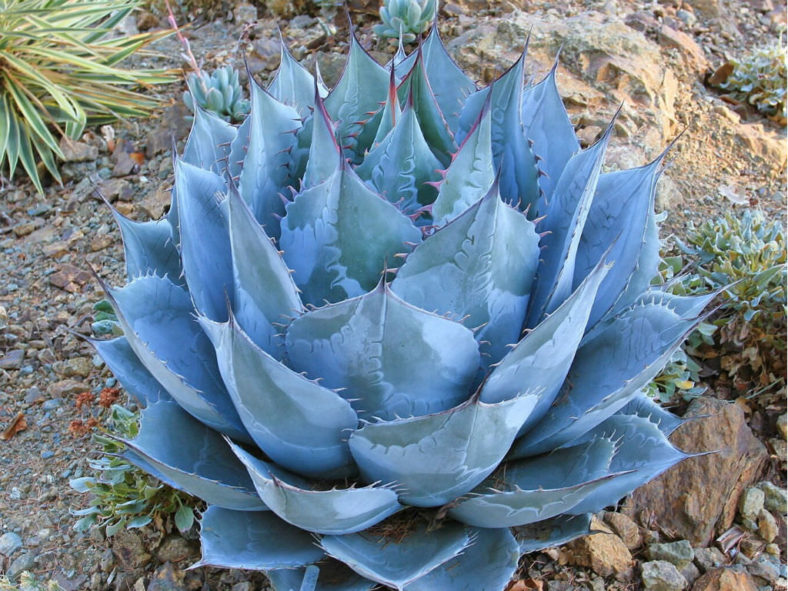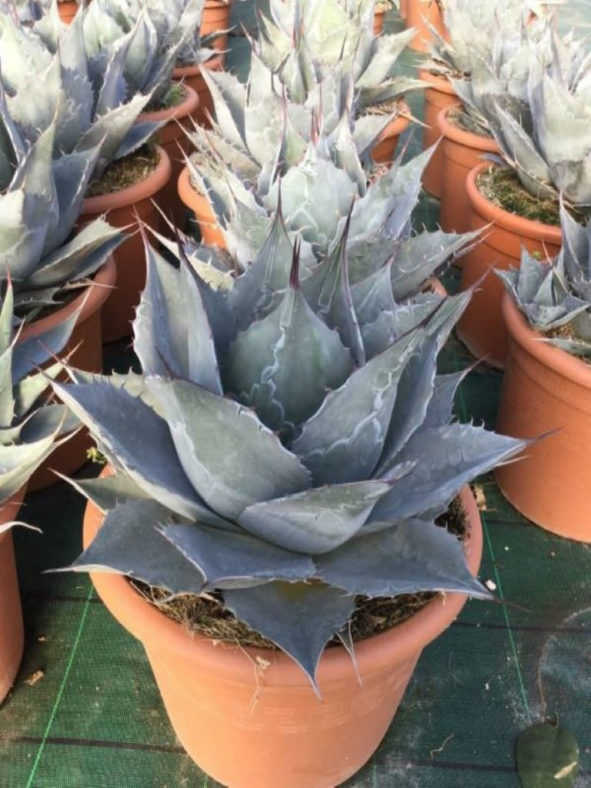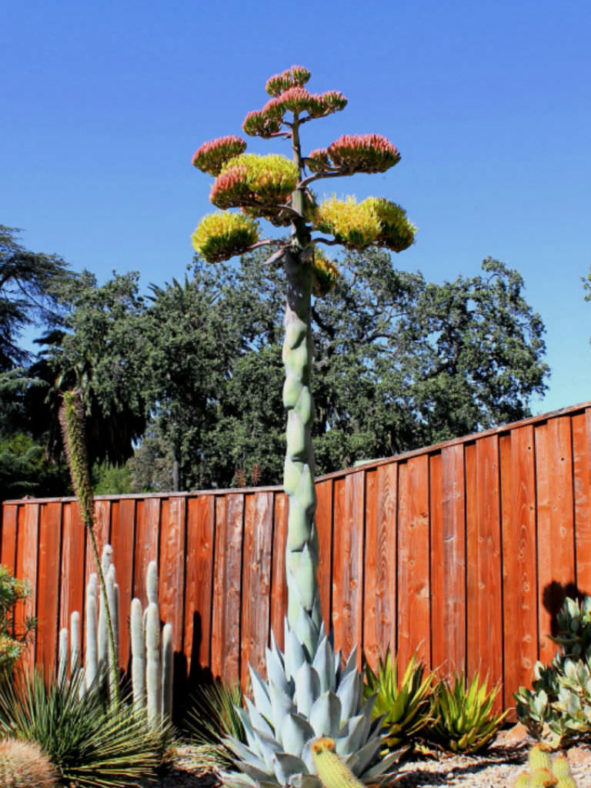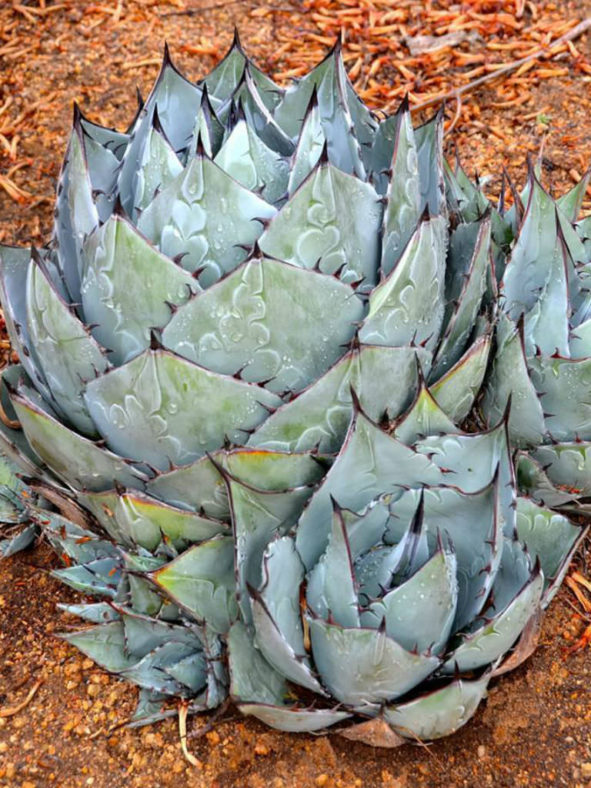Scientific Name
Agave parrasana A.Berger
Common Name(s)
Cabbage Head Agave, Cabbage Head Century Plant, Parrasana Agave
Synonym(s)
Agave wislizeni subsp. parrasana
Scientific Classification
Family: Asparagaceae
Subfamily: Agavoideae
Genus: Agave
Etymology
The specific epithet "parrasana (pronounced par-ra-sah-na)" refers to the Sierra de Parras, Coahuila, Mexico, where this type specimen was discovered.
Origin
Agave parrasana is native to Mexico (Coahuila).
Description
Agave parrasana is a slow-growing succulent that forms a compact, usually solitary rosette of fleshy, grey-green leaves irregularly dusted with a silvery-blue coating. The rosette can reach up to 2 feet (60 cm) in height and diameter, while the leaves can grow up to 16 inches (40 cm) long and 6 inches (15 cm) wide. The leaves have gnarled teeth along the edges and a brown terminal spine. The teeth are brown, turn gray over time, and make striking imprints on both surfaces of adjacent leaves.
The mature rosette produces flowers in panicles on a spectacular stalk in summer. The flower stalk can grow up to 20 feet (6 m) tall. The tubular flowers can measure up to 0.6 inches (1.5 cm) long. They are red in bud and open to yellow with red highlights.

How to Grow and Care for Agave parrasana
Light: Like all Agaves, this plant requires full sun to partial shade. If growing A. parrasana indoors, choose a bright, sunny window with as much sun as possible. From spring to fall, it loves going outside.
Soil: A. parrasana tolerates most soils with good drainage, but it prefers sandy or rocky soil.
Hardiness: During the growing season, it likes warm temperatures, while in winter, when resting, this succulent enjoys cooler temperatures. A. parrasana can withstand temperatures as low as 10 to 50 °F (-12.2 to 10 °C), USDA hardiness zones 8a to 11b.
Watering: From spring to fall, water thoroughly when the soil becomes dry. In winter, water sparingly about once a month. Plants in containers require more frequent watering than those in the ground.
Fertilizing: Give your A. parrasana a small amount of fertilizer in the spring during the first two years. Established plants seem to take care of themselves.
Repotting: If you notice your A. parrasana becoming pot-bound, repot it with fresh soil in a pot slightly larger than the old one. Give the plant a week or so to readjust before you water it again.
Propagation: Since it can take years to produce seeds, A. parasang is usually propagated by offsets. The best time to remove the offsets is in spring and summer; the seeds should be sown in spring.
Learn more at How to Grow and Care for Agave.
Toxicity of Agave parrasana
A. parrasana is not toxic to humans but may be mildly poisonous to children and pets.
Links
- Back to genus Agave
- Succupedia: Browse succulents by Scientific Name, Common Name, Genus, Family, USDA Hardiness Zone, Origin, or cacti by Genus
Photo Gallery
Click on a photo to see a larger version.


